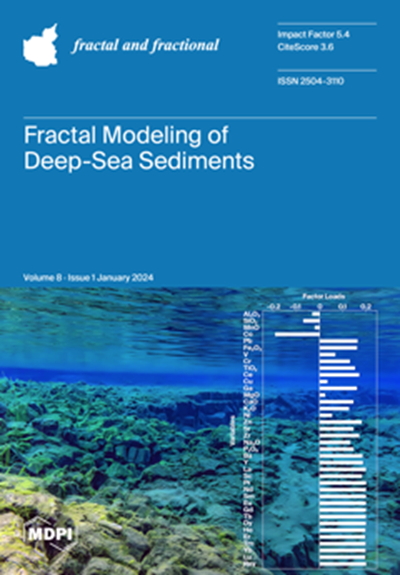阿片依赖与无标度分形脑活动的关联:一项脑电图研究
IF 3.6
2区 数学
Q1 MATHEMATICS, INTERDISCIPLINARY APPLICATIONS
引用次数: 0
摘要
嵌入自组织神经流形中的不同时间尺度的自相似性得到了很好的识别。在这项研究中,我们假设头皮脑电图(EEG)信号的赫斯特分形维数(HFD)揭示了慢性疼痛和阿片类药物使用之间的统计差异。我们通过使用从总共23名人类受试者获得的脑电图静息状态信号来检验这一假设:14名患有慢性疼痛,9名患有服用阿片类药物的慢性疼痛,5名患有慢性痛苦且未服用阿片药物,9名健康对照。使用多重分形分析算法,计算了所有组的全谱脑电图和脑电图频带时间序列的HFD。我们的研究结果表明,所有组的HFD在空间和时间上都有所不同,与服用阿片类药物的患者和健康对照组相比,不服用阿片样药物的患者的HFD程度较低。与对照组相比,慢性疼痛组的HFD总体下降,γ和β功率发生变化,并且与受试者的惯用手和性别配对。我们的研究结果表明,代表全脑功能障碍和神经处理减少的复杂性损失可以作为慢性疼痛和随后阿片类药物使用的脑电图生物标志物。本文章由计算机程序翻译,如有差异,请以英文原文为准。
Association between Opioid Dependence and Scale Free Fractal Brain Activity: An EEG Study
Self-similarities at different time scales embedded within a self-organizing neural manifold are well recognized. In this study, we hypothesize that the Hurst fractal dimension (HFD) of the scalp electroencephalographic (EEG) signal reveals statistical differences between chronic pain and opioid use. We test this hypothesis by using EEG resting state signals acquired from a total of 23 human subjects: 14 with chronic pain, 9 with chronic pain taking opioid medications, 5 with chronic pain and not taking opioid medications, and 9 healthy controls. Using the multifractal analysis algorithm, the HFD for full spectrum EEG and EEG frequency band time series was computed for all groups. Our results indicate the HFD varies spatially and temporally across all groups and is of lower magnitude in patients not taking opioids as compared to those taking opioids and healthy controls. A global decrease in HFD was observed with changes in gamma and beta power in the chronic pain group compared to controls and when paired to subject handedness and sex. Our results show the loss of complexity representative of brain wide dysfunction and reduced neural processing can be used as an EEG biomarker for chronic pain and subsequent opioid use.
求助全文
通过发布文献求助,成功后即可免费获取论文全文。
去求助
来源期刊

Fractal and Fractional
MATHEMATICS, INTERDISCIPLINARY APPLICATIONS-
CiteScore
4.60
自引率
18.50%
发文量
632
审稿时长
11 weeks
期刊介绍:
Fractal and Fractional is an international, scientific, peer-reviewed, open access journal that focuses on the study of fractals and fractional calculus, as well as their applications across various fields of science and engineering. It is published monthly online by MDPI and offers a cutting-edge platform for research papers, reviews, and short notes in this specialized area. The journal, identified by ISSN 2504-3110, encourages scientists to submit their experimental and theoretical findings in great detail, with no limits on the length of manuscripts to ensure reproducibility. A key objective is to facilitate the publication of detailed research, including experimental procedures and calculations. "Fractal and Fractional" also stands out for its unique offerings: it warmly welcomes manuscripts related to research proposals and innovative ideas, and allows for the deposition of electronic files containing detailed calculations and experimental protocols as supplementary material.
 求助内容:
求助内容: 应助结果提醒方式:
应助结果提醒方式:


